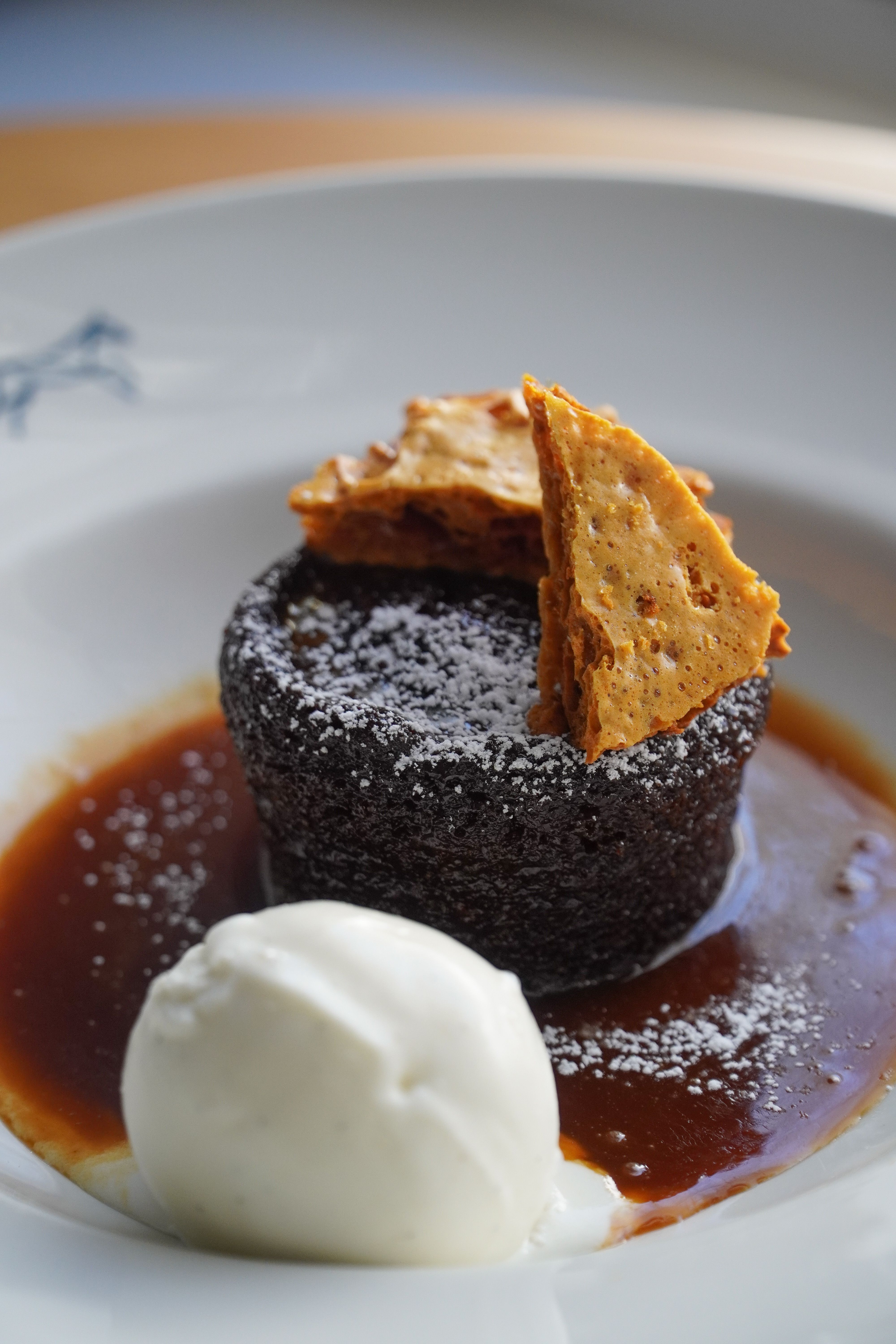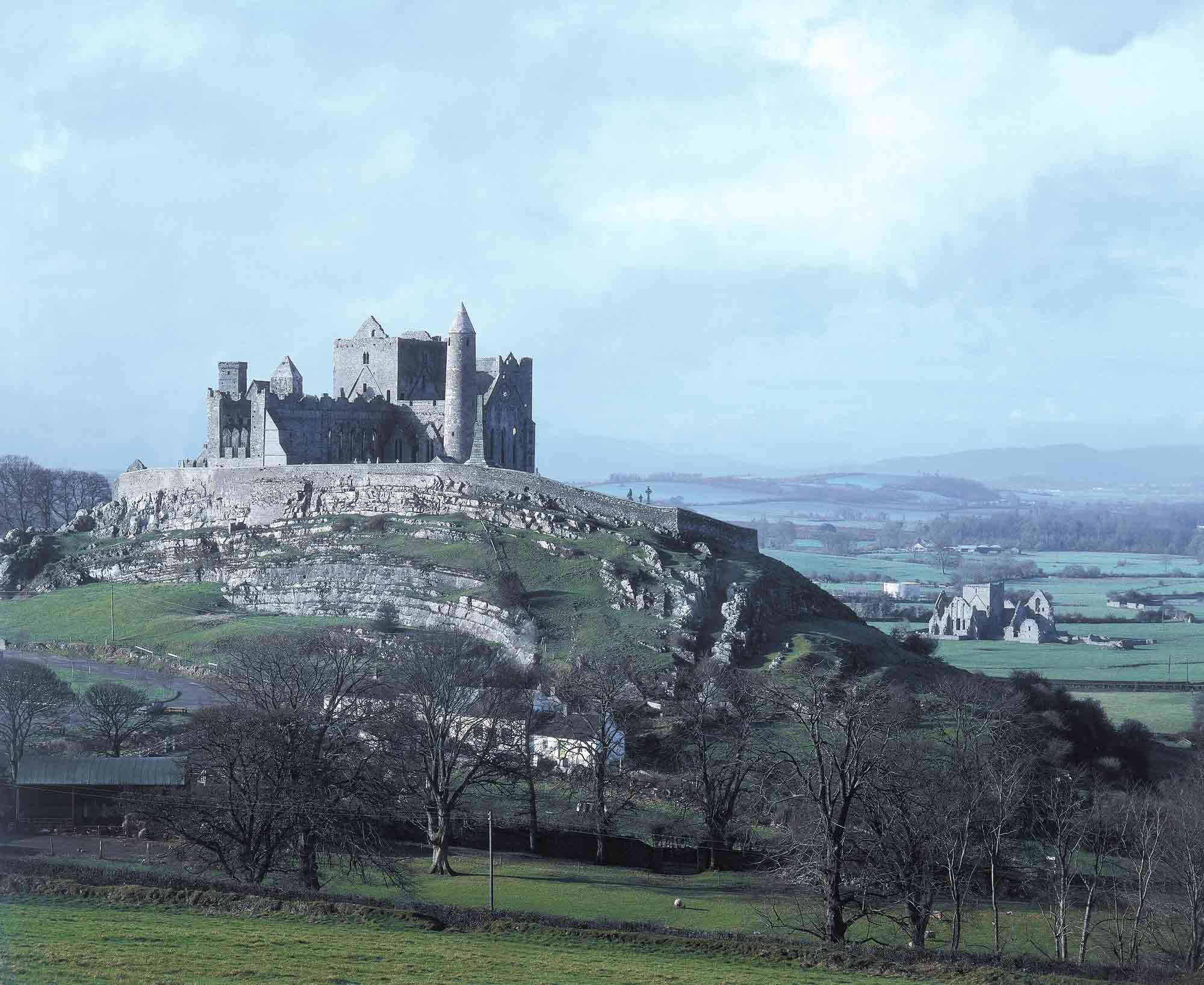The Rock of Cashel is one of the most recognizable landmarks in Ireland. Set on a dramatic outcrop of limestone in Tipperary, it’s the high king of monuments. Iconic in its historic significance, the impressive cluster of medieval buildings contains a Round Tower, High Cross, Romanesque chapel, Gothic cathedral, and fifteenth century Tower House. The traditional seat of the Kings of Munster, the monument is set in the shadow of the town that bears its name and the next stop on my easy-going journey through “Ireland’s Ancient East,” a touring route where visitors can explore sites reflecting four periods in Ireland’s history at their leisure — ancient, early Christian, medieval, and Anglo Ireland.
What better place to spend a few days here than at The Cashel Palace Hotel, the most historically significant building in town. Condé Nast Traveller recently listed Cashel among the twelve prettiest villages and small towns in Ireland, all singled out for their “charm, character and beauty . . . living time capsules of the past.” The hotel, in the town center, was built for the Archbishop of Cashel in 1732 in the popular Palladian style (a central main house flanked by two pavilions). With a handsome red brick façade, triple-opening Venetian windows, and a large wood-paneled entrance hall flanked by fluted Corinthian columns, the palace found itself at the heart of religious life for more than 200 years, hosting many powerful families and their guests. But all that changed when the Church of Ireland sold Cashel Palace in 1959. It eventually opened as a luxury hotel in 1962, and when I first stayed there in May 2012 I thought “how could this place be any more beautiful?”
Cashel Folk Village.
Fast-forward to 2016. The Magnier family, owners of nearby Coolmore Stud, the world’s largest and most successful thoroughbred breeding operation, bought the hotel, closed it down for four years, and transformed it into an even more beautiful — make that magnificent — property than I could ever have imagined. Georgina Campbell’s Guide recently named it “Hotel of the Year 2022,” and given that the hotel only reopened on March 1, 2022, the accolade is quite remarkable. Occupying 25 acres, with impressive gardens and a private pathway to the Rock of Cashel, the hotel now includes forty-two bedrooms and suites, a world-class spa, and three restaurants, including the lovely Queen Anne room where breakfast, lunch, and afternoon tea are served; stunning Bishop’s Buttery, the fine dining restaurant in the hotel’s original cellar; and Mikey Ryan’s, their Main Street pub that Good Food Ireland named “Pub of the Year” at a ceremony held on April 17.
With so much to offer in the hotel, I had to coax myself to leave to rediscover the pretty town of Cashel, starting at The Rock. The picturesque complex is one of the most remarkable collections of Celtic art and medieval architecture to be found anywhere in Europe. While few remnants of the early structures survive (most of the buildings date from the twelfth and thirteenth centuries), the oldest and tallest of the buildings is the well-preserved Round Tower (90 feet), dating from about 1100. Cormac’s Chapel, with parts of the cathedral on either side, was begun in 1127 and consecrated in 1134.
The complex is usually besieged by tourists, but on the day of my visit in early April I nearly had the Rock to myself and toured leisurely, absorbing Romanesque carvings in the Chapel, on St. Patrick’s Cross, and in the Cathedral. A short walk away at the foot of the Rock is another beautiful thirteenth-century structure, the Dominican Friary, and a little further afield are the scant remains of Hore Abbey, set on a thirteenth century Cistercian monastery.
Heading back into town, a stop at the Cashel Folk Village Museum on Dominic Street (cashelfolkvillage.ie) brings history back into the twentieth century for a look at the 1916 Easter Rising, the War of Independence, and the Civil War. It also houses a Garden of Remembrance and a large collection of memorabilia and artefacts from this period in Irish history. Cashel is a delightful, friendly town, make for strolling at your own pace. Be advised: if you’re strolling with a camera in hand you’ll quickly be spotted as a visitor and offered (whether you need it or not) assistance with crossing the street or given advice on where to shop or eat. Love this place! Next time, a look at “Tipperary Tastemakers,” the people who produce some of the county’s best foods

STICKY TOFFEE PUDDINGS WITH CARAMEL SAUCE & HONEYCOMB
MAKES 12 PUDDINGS
Great food abounds at Cashel Palace, including dishes served at Mikey Ryan’s, a local pub adjacent to the entrance of the hotel that was expanded and renovated to combine the charm of the original with the style of the new. Decorated in soft grays and blues with lots of local memorabilia, its menu is that of a gastropub with touches of good old-fashioned Irish food. This Sticky Toffee Pudding is a perfect and delicious example! The honeycomb topping is optional.
For the puddings
1 1/2 cups pitted dates.
1 teaspoon vanilla extract
2/3 cup boiling water
6 tablespoons butter, at room temperature
1/2 cup (packed) light brown sugar
2 large eggs
2 tablespoons black treacle
1 1/2 cups flour
1/2 teaspoon baking powder
1 1/2 teaspoons baking soda
Pinch of salt
1/2 cup milk
For the sauce
1 cup sugar
4 tablespoons butter, cut into small pieces
3/4 cup heavy (whipping) cream
For the honeycomb
1 cup sugar
1/2 cup honey
1/2 cup golden syrup
2 tablespoons water
4 teaspoons baking soda
Vanilla ice cream, for serving
Honeycomb pieces, for serving (optional)
1.Make puddings. Preheat oven to 325°F. Coat the cups of a standard muffin pan with nonstick baking spray with flour.
2.In a large bowl, soak dates and vanilla extract in boiling water for 30 minutes. Set aside.
3.In a large bowl, beat butter and sugar with an electric mixer on medium speed for 2 to 3 minutes, or until soft and pale. Beat in eggs and treacle. Transfer the date mixture to a food processor; process until smooth. Fold into butter mixture.
4.Sift together flour, baking powder, soda, and salt. Fold into date mixture; fold in milk. Spoon mixture into prepared pan.
5. Bake for 15 minutes. Rotate pan; bake for another 7 minutes, or until a skewer inserted into center of one comes out clean. Remove from oven; let cool on wire rack for 10 minutes before removing.
6. Make sauce. In a medium saucepan over medium heat, heat sugar a little at a time until it lightly browns. Add butter, a few pieces at a time; whisk until combined. Slowly add cream; whisk until smooth.
7. Make honeycomb. Line a large baking pan with parchment paper; set aside.
8. In a large, wide-based saucepan over medium-low heat, combine sugar, honey, syrup, and water. Cook, stirring frequently, until sugar melts. When mixture begins to bubble up and turn golden, turn off heat. Quickly whisk in baking soda (mixture will bubble up; be careful). Quickly pour mixture onto prepared pan; spread evenly. Leave for at least 2 hours, or until mixture hardens; break it into pieces. Store remaining honeycomb in an airtight tin.
9. To serve, pour a little of the sauce over each pudding; top with a piece of honeycomb (if using). Serve with a scoop of ice cream.







